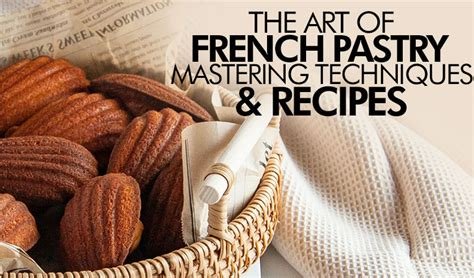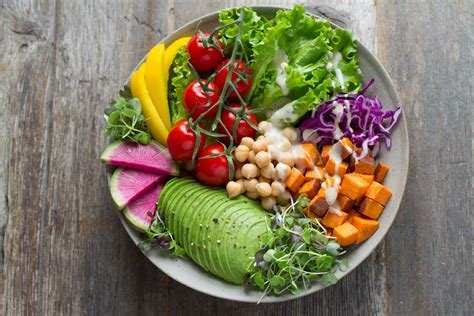The Art of French Patisserie: Mastering Classic Desserts and Pastries
Are you ready to elevate your baking skills and indulge in the art of French patisserie? In this blog post, we will delve into the exquisite world of classic French desserts and pastries, uncovering the secrets and techniques behind these delectable treats. From mastering the art of buttery and flaky pastry dough to creating delicate macarons and perfecting the art of choux pastry, we will explore the foundational elements of French patisserie. We will also take a closer look at the divine world of French tarts and tartlets, and unlock the secrets of luscious crème patissière. Additionally, we will learn how to elevate desserts with decadent chocolate ganache. By the end of this post, you will be equipped with the knowledge and skills to create your own stunning French-inspired desserts that are sure to impress. So, let’s embark on this culinary journey and explore the art of French patisserie together.
Understanding the foundations of French patisserie
French patisserie is renowned for its exquisite pastries, delicate flavors, and meticulous attention to detail. It is a culinary art form that has been perfected over centuries, and understanding the foundations of French patisserie is essential for anyone aspiring to master the craft.
One of the key elements of French patisserie is pâte feuilletée, or puff pastry. This light and flaky dough is made by layering butter between thin sheets of dough, which is then rolled and folded multiple times to create numerous layers. The result is a buttery and crisp pastry that is the foundation for many classic French desserts, such as croissants and palmiers.
Another fundamental aspect of French patisserie is crème pâtissière, or pastry cream. This rich and velvety custard is used to fill éclairs, tarts, and other pastries, and mastering the art of crème pâtissière is essential for creating authentic French desserts.
Understanding the foundations of French patisserie also entails learning the techniques for creating delicate and colorful macarons. These almond meringue cookies are notoriously finicky to make, but with the right knowledge and practice, they can be a stunning addition to any pastry display.
Mastering the art of buttery and flaky pastry dough
Mastering the art of buttery and flaky pastry dough is an essential skill for any aspiring pastry chef. The key to achieving the perfect flakiness lies in the technique of layering the dough with butter. This creates the characteristic texture that is highly coveted in pastries like croissants, danishes, and puff pastry.
One of the most important steps in mastering this art is to use high-quality butter with a high butterfat content. This not only adds richness and flavor to the dough but also contributes to its flakiness when baked. Properly chilling the dough between folds is also crucial in ensuring that the layers remain distinct and the pastry rises beautifully in the oven.
Another factor to consider is the type of flour used in the dough. Opting for a low-protein flour, such as cake flour, results in a more delicate and tender pastry. The balance between the amount of butter and flour used is also key, as too much butter can cause the dough to become greasy, while too little can result in a dry and tough texture.
Ultimately, mastering the art of buttery and flaky pastry dough requires patience, practice, and precision. With the right techniques and attention to detail, anyone can create delectable pastries that are as pleasing to the eye as they are to the palate.
Creating exquisite macarons: a delicate French treat
Macarons are one of the most beloved and iconic French treats, known for their delicate, airy texture and intense flavors. These little morsels are often seen as a symbol of elegance and refinement, and for good reason – creating the perfect macaron requires a great deal of skill and attention to detail.
From carefully measuring out ingredients to mastering the art of the macaronage technique, there are many elements that go into creating these delightful confections. The process begins with whisking together almond flour and powdered sugar, followed by meticulously folding in a meringue to create the signature airy texture.
Once the macaron shells are piped and baked to delicate perfection, the real magic happens when it comes to filling and flavoring. Whether it’s a classic chocolate ganache, tangy fruit curd, or fragrant floral buttercream, the filling of a macaron is where the true artistry comes into play.
Creating exquisite macarons is truly a labor of love, but the end result is a delicate French treat that is sure to impress and delight anyone who has the pleasure of indulging in them.
Perfecting the art of choux pastry: from éclairs to profiteroles
Choux pastry, also known as pâte à choux, is a versatile and delicious pastry dough that is used to create a variety of French desserts. The key to perfecting choux pastry lies in the technique of cooking the dough on the stovetop before incorporating the eggs. This method creates a light and airy pastry that is ideal for filling with flavored creams and toppings.
One of the most iconic uses of choux pastry is in the creation of éclairs. These delicate pastries are filled with creamy custard or flavored cream and then topped with a glossy chocolate glaze. Mastering the art of piping and shaping the choux dough is essential for producing the perfect éclair, with a crisp outer shell and a tender, hollow interior.
Another classic choux pastry dessert is the profiterole, also known as a cream puff. These bite-sized pastries are often filled with vanilla ice cream and then drizzled with warm chocolate sauce, creating a delightful and indulgent treat. Achieving the ideal balance of crispness and chewiness in the profiterole shell is a skill that takes practice and precision.
Whether you’re making éclairs or profiteroles, perfecting the art of choux pastry requires attention to detail and a commitment to mastering the unique techniques involved. With patience and perseverance, you can create exquisite French pastries that will impress and delight anyone who has the pleasure of tasting them.
Exploring the divine world of French tarts and tartlets
If there’s one thing that symbolizes the elegance and sophistication of French patisserie, it’s the delectable world of tarts and tartlets. These delicate pastries are a true work of art, with their flaky, buttery crusts and luscious, flavorful fillings. From the classic fruit tarts to the more modern and innovative flavor combinations, French tarts and tartlets are a delightful treat for the senses.
One of the key elements of a perfect French tart or tartlet is the crust. Made with a combination of flour, butter, and sugar, the crust is carefully mixed and rolled out to achieve the perfect texture and thickness. The result is a pastry that is not only visually stunning but also incredibly delicious, with a melt-in-your-mouth quality that is simply irresistible.
When it comes to the fillings, French patisserie offers an endless variety of options. From tangy lemon curd to rich and creamy chocolate ganache, there is a tart or tartlet to suit every palate. The beauty of these pastries lies in their versatility, allowing for creative flavor combinations and stunning presentation.
Whether enjoyed as a light and elegant dessert or as a sweet treat to accompany a cup of coffee, French tarts and tartlets are a true testament to the artistry and craftsmanship of French patisserie.
Unlocking the secrets of luscious crème patissière
Crème patissière, also known as pastry cream, is a key component in many French desserts. It is a rich and smooth custard that is used to fill pastries such as éclairs, tarts, and cream puffs. The secret to achieving a luscious crème patissière lies in the technique and ingredients used to make it.
One of the essential ingredients in crème patissière is vanilla beans, which impart a fragrant and floral note to the custard. To unlock the full flavor of the vanilla, the beans are scraped and infused into the milk before being added to the egg mixture. This results in a custard that is not only creamy and velvety but also has a pronounced vanilla flavor that elevates the overall dessert.
Another key step in creating a luscious crème patissière is the careful tempering of the eggs. This entails slowly adding the hot milk mixture to the eggs while whisking constantly. This process prevents the eggs from curdling and ensures a smooth and silky custard. The proper tempering of the eggs is crucial in achieving the desired consistency and texture of the crème patissière.
Furthermore, the straining of the custard is a crucial step in refining the texture of the crème patissière. This step removes any lumps or bits of cooked egg, resulting in a velvety and smooth custard. The final product is a luscious crème patissière that is not only visually appealing but also a delight to the palate.
Elevating desserts with decadent chocolate ganache
Chocolate ganache is a versatile and decadent ingredient that can elevate any dessert to new heights. With its rich and velvety texture, it adds a touch of indulgence to a wide range of sweet treats, from cakes and tarts to truffles and tortes.
One of the best ways to use chocolate ganache is as a filling for cakes and pastries. Whether it’s sandwiched between layers of sponge cake or piped into the center of a delicate éclair, it adds a luscious and creamy element that takes the dessert to the next level.
Another popular application of chocolate ganache is as a glaze or topping for desserts. When heated and poured over a cake or tart, it creates a glossy and decadent finish that not only looks impressive but also adds a rich and intense chocolate flavor to the dish.
For those with a sweet tooth, chocolate ganache can also be used to make truffles or bonbons. By rolling the ganache into small balls and coating them in cocoa powder or nuts, you can create luxurious and indulgent treats that are perfect for special occasions or as a homemade gift.
Frequently Asked Questions
What are the foundations of French patisserie?
The foundations of French patisserie include mastering classic desserts and pastries, understanding the art of buttery and flaky pastry dough, creating delicate macarons, perfecting the art of choux pastry, exploring the divine world of French tarts and tartlets, unlocking the secrets of luscious crème patissière, and elevating desserts with decadent chocolate ganache.
How do you create exquisite macarons?
To create exquisite macarons, you need to carefully measure and mix almond flour and powdered sugar, whip egg whites to stiff peaks, fold the dry ingredients into the meringue, pipe the mixture into small circles, let them sit to form a skin, and bake until set. Afterwards, fill the macarons with a flavorful filling to create a delicate French treat.
What are the secrets to making a perfect choux pastry?
The secrets to making a perfect choux pastry include using a combination of water, butter, flour, and eggs, mastering the technique of cooking the dough on the stove, piping the dough into desired shapes, and baking it until golden and puffy. This versatile pastry can be used to make éclairs, profiteroles, and more.
How do you elevate desserts with chocolate ganache?
To elevate desserts with chocolate ganache, you can use a 1:1 ratio of chocolate and heated heavy cream to create a smooth, rich, and glossy mixture. This luxurious topping can be poured over cakes, tarts, and other desserts to add a decadent touch.
What is the key to creating buttery and flaky pastry dough?
The key to creating buttery and flaky pastry dough lies in using cold butter, handling the dough as little as possible, and allowing it to rest in the refrigerator before rolling and shaping. This results in a delicate and tender pastry that can be used in a variety of sweet and savory creations.
How can you make luscious crème patissière?
To make luscious crème patissière, you need to heat milk and vanilla, whisk together egg yolks, sugar, and cornstarch, temper the egg mixture with the hot milk, and cook until thickened. The resulting creamy and vanilla-infused custard can be used to fill tarts, éclairs, and other pastries.
What are some classic desserts and pastries in French patisserie?
Classic desserts and pastries in French patisserie include éclairs, profiteroles, macarons, tarts, tartlets, and a variety of other sweet treats that showcase the meticulous and artful nature of French pastry making.






